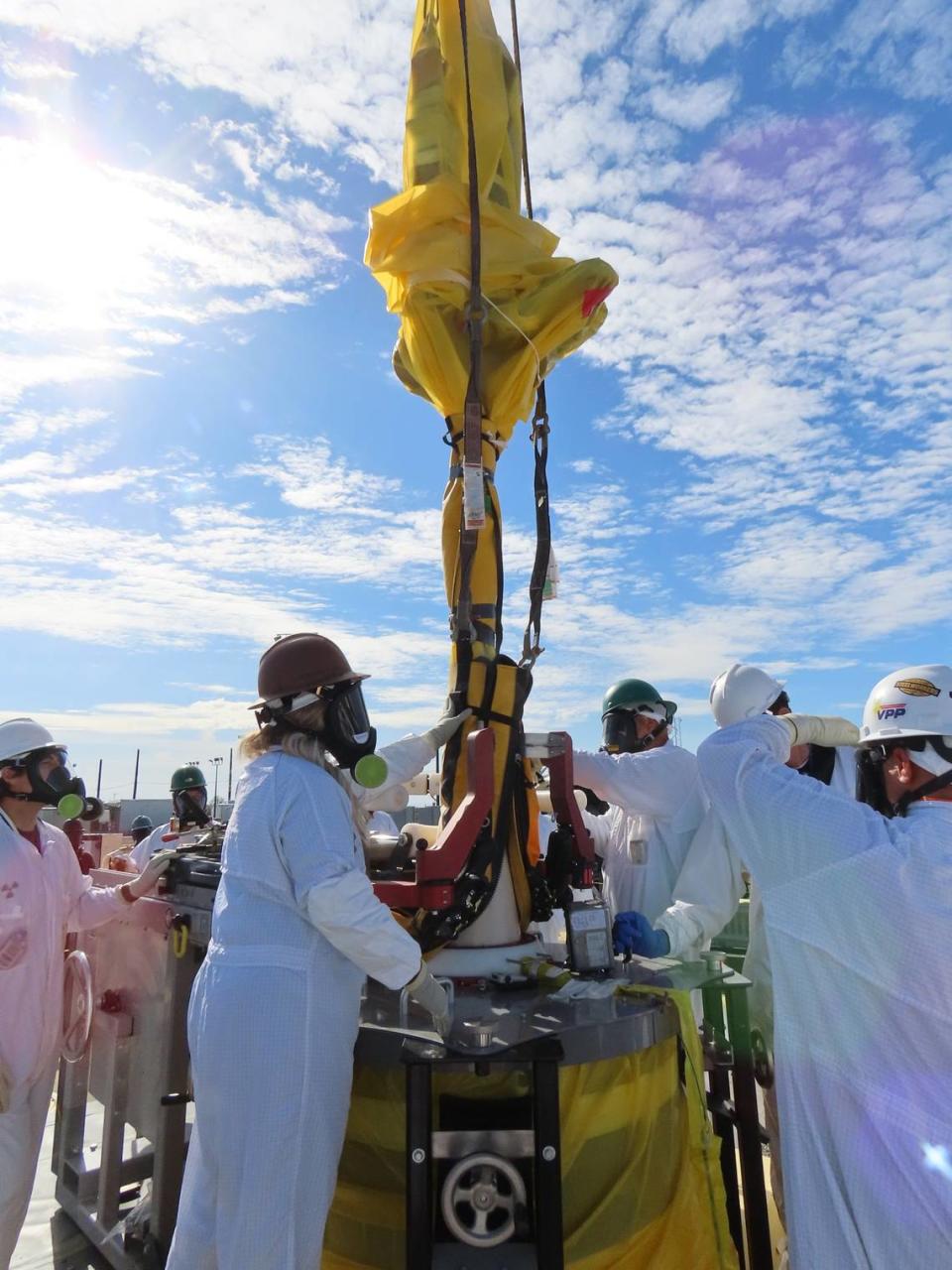Losing bidder sues, challenging award of $45B Hanford radioactive waste contract
A competing bidder has filed a lawsuit over the award of a Department of Energy contract valued at up to $45 billion for emptying Hanford’s underground tanks of radioactive waste and starting to treat the waste for disposal.
Hanford Tank Disposition Alliance filed the lawsuit in the U.S. Court of Federal Claims, bypassing a protest to the Government Accountability Office, the usual way that federal contracts are initially contested.
The alliance is a limited liability company formed by Atkins Nuclear Secured, Jacobs Technology and Westinghouse Government Services.
DOE awarded the tank waste contract in mid April to Hanford Tank Waste Operations and Closure of Lynchburg, Va., a joint venture, which has standing in the lawsuit as an intervenor.
Hanford Tank Waste Operations and Closure is led by BWX Technologies and includes Amentum Environment and Energy and Fluor Federal Services. Subcontractors include DBD, DSS Sustainable Solutions USA, Intera and Longenecker & Associates.
The challenge filed by Hanford Tank Disposition Alliance has been sealed by the court.
The company said its filing includes proprietary information, trade secrets and confidential financial information that it wants to shield from its competitors.

Arguments in the case are scheduled for Aug. 8. in Washington, D.C.
The contract awarded was for 10 years, but with work assigned late in the contract period stretching it to a total of up to 15 years.
Work covers tasks now being done by Washington River Protection Solutions, an Amentum led company, which has held the Hanford nuclear reservation site contract for tank waste since 2008. It has been given multiple short-term contract extensions in recent years.
Contract includes tank waste treatment
The new contract ushers in a new era at Hanford by including work not only to manage underground tanks of waste but to treat some of the waste at the site’s vitrification plant.
The 580-square-mile Hanford site in Eastern Washington adjacent to Richland was used from World War II through the Cold War to produce nearly two-thirds of the plutonium for the nation’s nuclear weapons program.
The work left 56 million gallons of radioactive and hazardous chemical waste stored in underground tanks, many of them prone to leaking.

Construction started on the vitrification plant 21 years ago and it is expected to be commissioned and ready to treat radioactive tank waste for disposal starting next year.
Initially, it will treat just the least radioactive of the waste, turning it into glass for disposal at a lined central Hanford landfill.
In addition to treating waste at the vitrification plant, the new contractor also will be responsible for core functions of the plant, including project management, security, emergency services and safety and quality.
Work at the tank farms that will continue under the new contract includes emptying waste from 149 leak-prone single shell tanks into 27 newer double-shell tanks for storage until it can be treated for disposal and also eventually permanently closing the tanks.
Work also includes separating out low activity waste from the waste mixture in the tanks to feed to the vitrification plant’s Low Activity Waste Facility to glassify it for disposal.
Brian Vance, the DOE manager at Hanford, told the Hanford Advisory Board at its last meeting that the new contractor will take over work at the tank farms initially as it starts to learn about the treatment plant.
DOE is working on a plan for extended commissioning of the vitrification plant as radioactive waste is introduced to have the plant “up and stable” before commissioning is considered completed.
The new contractor will spend some time learning about the plant then before it takes over operation of the plant.
Vance said at the meeting that he was expecting a protest of the contract award, given its size.
He said in April that the formal transition process, which is set at 120 days, could start at the end of the calendar year. But he also said it was difficult to predict a schedule.
2nd contract award challenge
This is the second time a contract to replace the expiring contract held by the current tank farm contractor has been appealed.
In May 2020, DOE awarded a 10 year, $13 billion contract to manage Hanford tank waste to a team headed by BWXT and Fluor with primary subcontractors Intera and DBD. It did not include the vitrification plant work.

But after appeals were filed to the GAO over the choice of the new tank contracting team, DOE canceled the contract award.
One appeal was filed by a company owned by Aecom, Fluor and Atkins and the other by a company owned by Jacobs Government Services Co.
The GAO dismissed the appeals, but DOE voluntarily decided to address an issue raised in the appeal and canceled the contract.
In February 2021, it announced that it would instead seek a contractor for both vitrification plant operations and the management of the tank farms.

